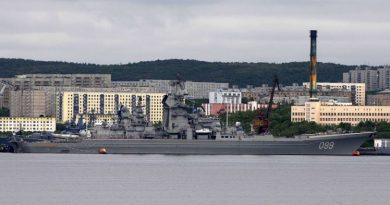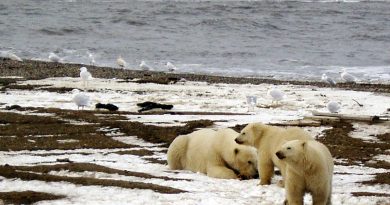Blog: Touching down at Nuuk’s expanded airport
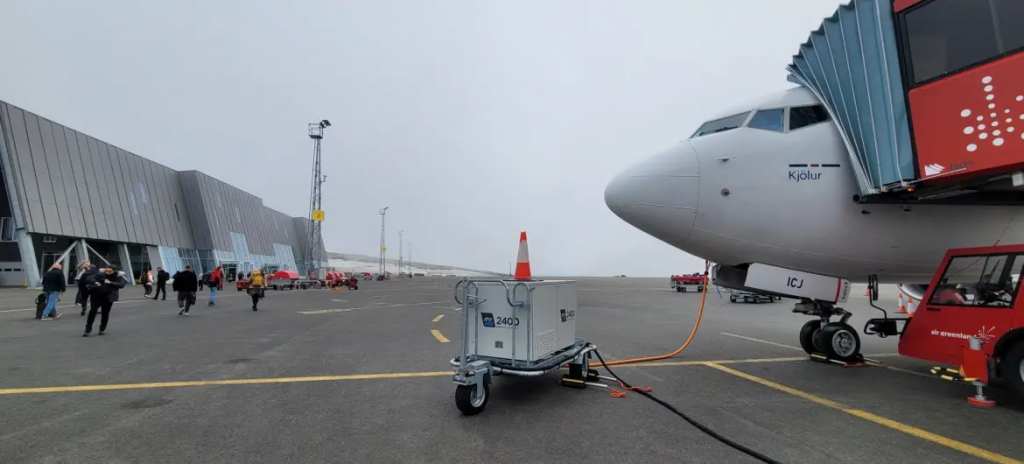
Flying from Iceland to Greenland is a little like jetting from one moon to another.
Recently, I was one of the 60-odd passengers on board Icelandair’s first Boeing 787 MAX flight to the recently expanded airport in Nuuk, the capital of Greenland. Previously, the Icelandic airline, which prides itself on connecting Europe and North America via its volcanic hub at the center of the North Atlantic Ocean, served the route with much smaller Dash 8-200 aircraft and Dash 8-Q400 planes. These propeller planes can carry 40 to 50 people depending on their configuration. The Boeing 787 MAX, in contrast, can carry 150-160 passengers.
On one of those gusty Icelandic days where wind sandblasts the skies to a crystalline clarity, we boarded the plane from Kéflavik Airport. A few dozen eager passengers began lining up well before boarding time. I suppose a Dash 8-200 would have in fact fit everyone, but that would have looked out of place on Nuuk’s giant 2200-meter runway. Optics, in this day and age, are everything.
Greenland’s national tourism board, Visit Greenland, seems to have the mentality of “build it and they will come.” Yet Icelandair president and CEO Nils Bogason remarked at the biannual Icelandair Mid-Atlantic trade show in March 2025, “Greenland is unique. I mean, Iceland is unique, but Greenland is really, really unique. It’s a complex market at the moment, and what makes it complex is that it’s not enough to build the runway. You have to build the hotels and the necessary infrastructure.”
Nuuk’s new stretch of tarmac, which was extended from a measly 950 meters, opened in November 2024, allowing jumbo jets to land in the Greenlandic capital for the first time. Previously, they had to fly to the former US Air Force base in Kangerlussuaq, where I traveled in 2014 on board a US military C-130 Hercules aircraft from Goose Bay, Canada.
At the gate in Keflavík, a British tourist standing behind me started talking to another passenger in line, telling him how he had travelled all over Asia in his early 30s, when he lived in Singapore. Now, appearing to be in his early 40s, he said, “The world is a lot more connected now.” I puzzled over this statement, seeing as a decade ago, someone with his passport could still travel without much hassle to Russia – not to mention the United States – but decided to let it slide. The world’s largest country may be off-limits, but what does it matter when the world’s largest island is open for business (though most certainly not for sale)?
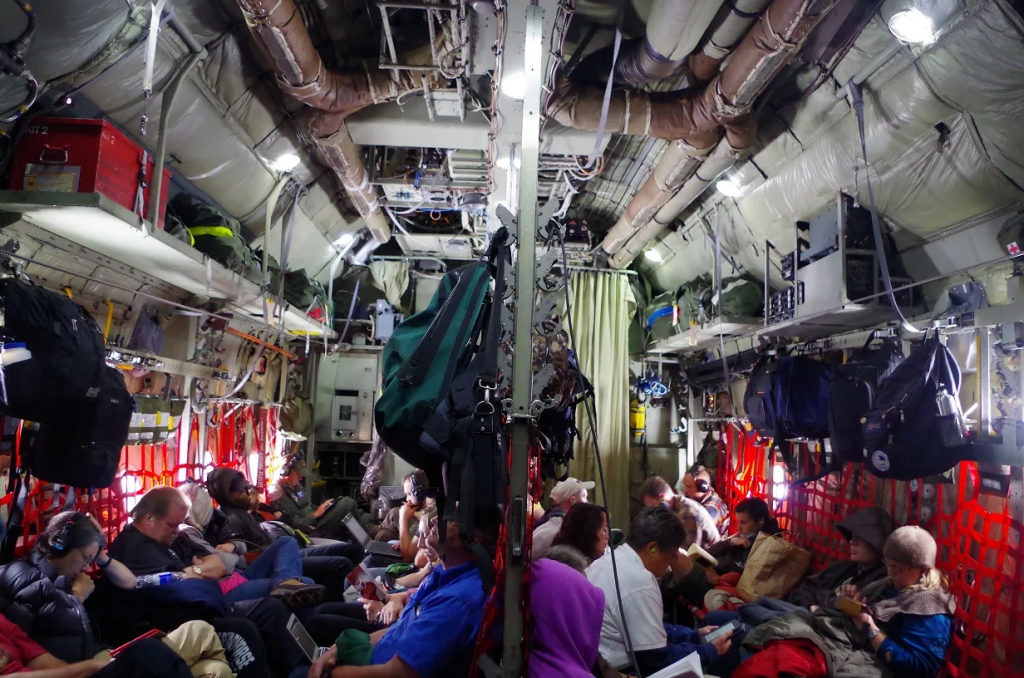
We took off from Kéflavik Airport about 30 minutes late and flew over the North Atlantic for about 2.5 hours until we reached Greenland. I actually hadn’t even planned on taking an inaugural flight of any sort. I had merely booked this flight as it aligned with the start date of the Fulbright Arctic Initiative’s meeting in Greenland.
Thirty minutes into the journey, however, one of the flight attendants announced that in recognition of Icelandair’s first 787 flight to Nuuk, we would be receiving a small gift. I wondered with mild excitement what this could be. Years ago, I’d happened to be on one of United Airlines’ first Dreamliner flights. To mark the occasion, every passenger received a commemorative deck of playing cards, which I still have buried in some drawer.
Icelandair, being a budget airline, gave everyone a gift that might actually last as long. The flight attendants came through the aisle bearing foil-wrapped möndlukökur, or small almond cakes, laden with dozens of preservatives and a lick of pastel pink frosting. The tiny 500 ISK ($4.00) pastry had caught my eye in the in-flight menu on the first leg of my journey with Icelandair from Glasgow to Reykjavik. During the heady days of polar exploration at the end of the nineteenth and beginning of the twentieth centuries, intrepid men with big fur-trimmed coats and bigger egos fêted their accomplishments with riotous toasts and champagne. In the twenty-first century, to celebrate the forging of yet another link in the globalization of the Arctic, passengers quietly unwrapped the Icelandic version of a Twinkie.
As we approached Nuuk from the east, the sun glinted off the snow that still pockmarked the granite bedrock. Soon enough, upon descending, the clear skies gave way to the perpetual fog for which the Greenlandic capital is notorious. Its often socked-in conditions are one reason why many Greenlanders are nervous about the prospects of relocating the international airport to Nuuk. While Kangerlussuaq, which is located up the country’s longest fjord some 160 kilometers from the coastline, enjoys relatively clear conditions, coastal Nuuk is regularly bogged down by the atmospheric phenomenon that American poet Carl Sandburg memorably described as coming in on “little cat feet.”
At any rate, our plane touched down onto a dark gray tarmac surrounded by rocks of an identical far-side-of-the moon hue. The tarmac seemed to be hewn from the substrate encircling it. Usually, whenever you land somewhere, there’s bits of greenery to distinguish the hard, manmade infrastructure from the softer natural surroundings, even in a place like Iceland. Not in Greenland: everything is just rock and snow for miles. Enormous amounts of granite and gneiss had been blasted away to make room for doubling the runway and then some. According to the American Society of Civil Engineers, in both Nuuk and Ilulissat, where the runway has also been extended to allow international tourists easier access to the icebergs that float around the seaside settlement, six million cubic meters of rock required excavation – a volume equivalent to “a soccer field, one and a half kilometers in the air.”
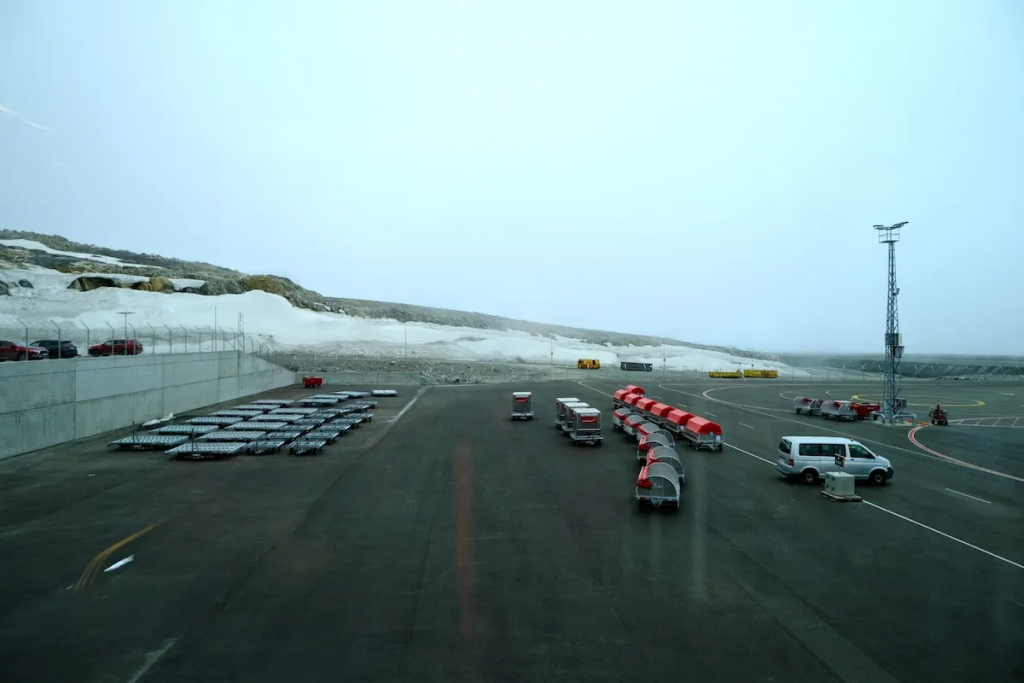
We sat on the plane for about 20 minutes as the ethereal sounds of the Icelandic musicians piped through the speakers. I stared out the window as the baggage handlers started laboring in the cold, gray weather. Passengers stood in the aisle and waited patiently: this, after all, was a group of seasoned travelers rather than spring breakers. Though ready for the next frontier, they had seen it all before. Neither were they exactly chomping at the bit to get out into the overcast skies of Nuuk, where the temperature was hovering around 0°C.
A flight attendant came on the intercom. “Passengers, sometimes, when you do something for the first time, it takes a little while,” she apologized. “They are trying to connect the airbridge, and it is taking a little bit of time, but we are almost ready,” she added.
Ten minutes later, we were able to disembark. I thought the airbridge would funnel us seamlessly into the new terminal, but in fact, it deposited us straight onto the runway. A few employees watched us, while some even took photos. Nobody seemed to mind as the few dozen passengers lingered around the aircraft, taking photos of the Icelandair jet and a neighboring Jettime plane, which was a charter flight from Denmark. Standing on a huge runway with only two airplanes, no matter how big they were, enhanced the frontier feeling of it all.
We walked into the shiny new terminal, which had that quintessentially Nordic look – all pale wood and diagonal lines and duty-free alcohol. The main distinctions were all the boxes of duty-free cigarettes for sale – no doubt to sate the smoking habits of Greenlanders rather than the high-end, health-conscious tourists that Visit Greenland hopes to attract (full strategy here) – and the signs, which were in both Greenlandic and Danish. There was no passport control or customs clearance. Greenland appears to be treating arrivals from Iceland as within Schengen, even though technically, the autonomous territory of the Kingdom of Denmark lies outside the European travel region.
As I ignored the boxes of cigarettes warning me in Danish and Greenlandic that my life could be in jeopardy, I overheard the comforting yet cloying voice of an American. As Americans are wont to do, she was chatting with another American she had just met, announcing that she had taken the Icelandair flight to Nuuk so that she could be here when the first United Airlines flight from New York arrives in the Greenlandic capital in June 14. That plane, no doubt, will be sold out given that airline’s dedicated group of mileage runners whose chief pastime is to take inaugural flights to places like Ulaanbaatar or Bilbao. For them, the journey is indeed the destination. Maybe United will even give them a deck of playing cards to celebrate their pioneering trip to Nuuk.
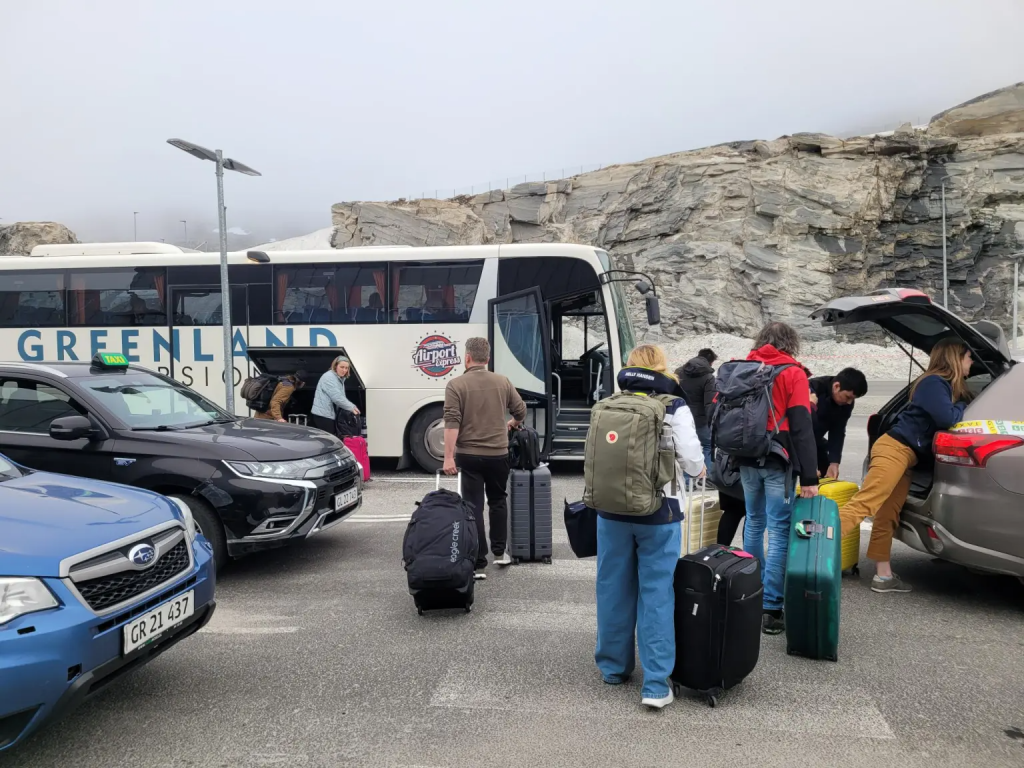
Once outside the airport, I hopped into a taxi with a few fellow Fulbrighters. I asked the driver what people thought of the expanded airport. “I think people here are excited, but in other towns, not so much,” he said. “But already since November, thirty flights have been cancelled,” he pointed out, drawing attention to the bad weather conditions. It does seem as if fog and also frequent low pressure conditions could cause regular issues for landing at Nuuk, especially for slightly smaller aircraft like the Airbus A320.
I asked the taxi driver if he planned to travel anywhere. “Yes, I just got back from two weeks out,” he said. I imagined him sitting on the beach in some sunny destination like France, Spain, or Hungary, where my upcoming AirBnB host in Ilulissat told me he was traveling for the month of June.
But then the driver continued, “In July, I’ll go outside again, for halibut fishing.” The airport might have expanded, but for my taxi driver at least – and likely for many other Greenlanders – the sea is still the place to be.
This post first appeared on Cryopolitics, an Arctic News and Analysis blog.
Related stories from around the North:
Canada: Northern airlines say feds should intervene if they want lower prices for the North, CBC North
Finland: Rovaniemi airport in Arctic Finland to get major expansion as passenger numbers surge, Eye on the Arctic
Greenland: New Copenhagen-Kangerlussuaq flight aims to boost Greenland tourism, Eye on the Arctic
Norway: Arctic Norway’s Tromsø Airport struggles as international arrivals triple, The Independent Barents Observer
Sweden: Northern Scandinavia to pioneer commercial flights with electric planes, Radio Sweden


